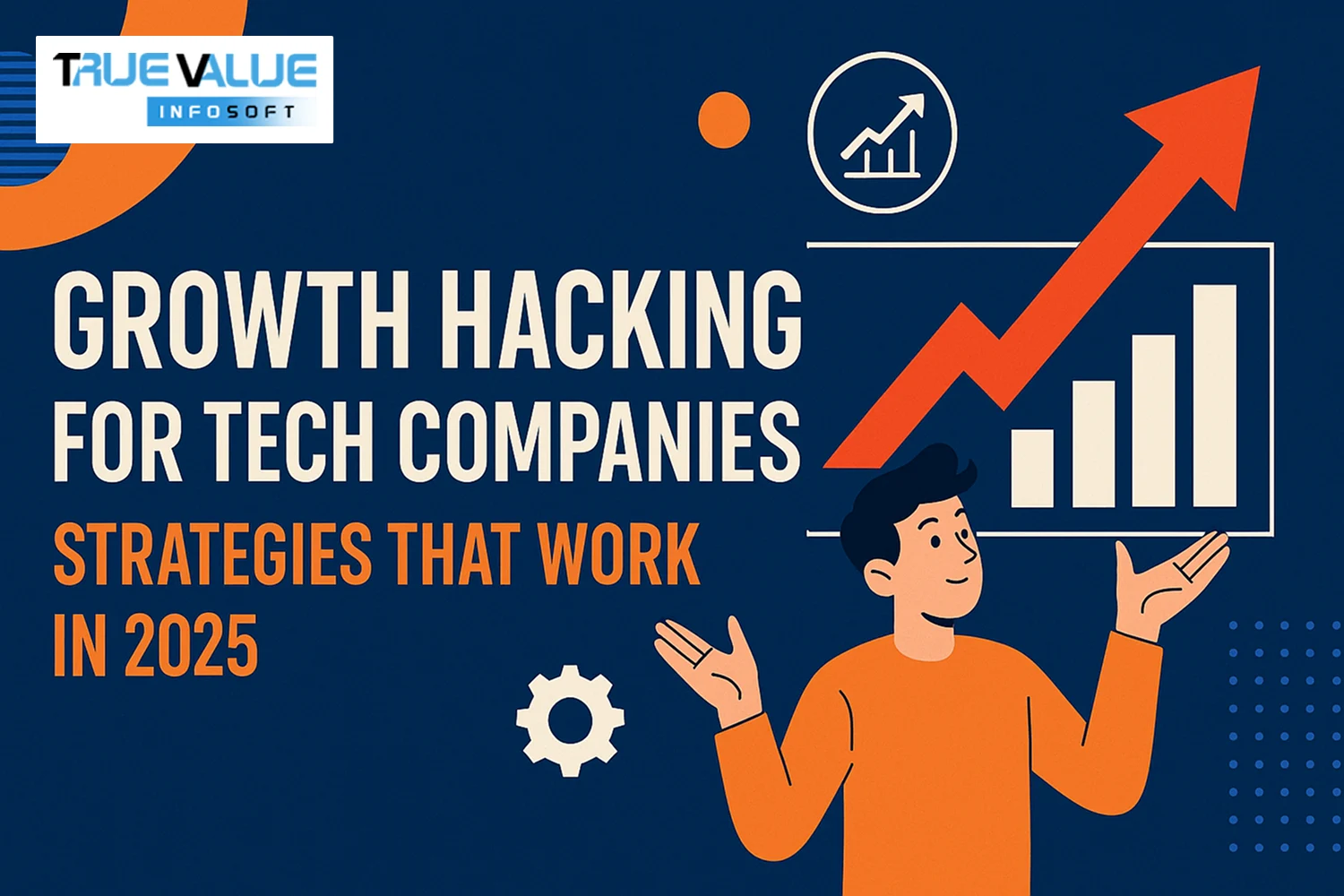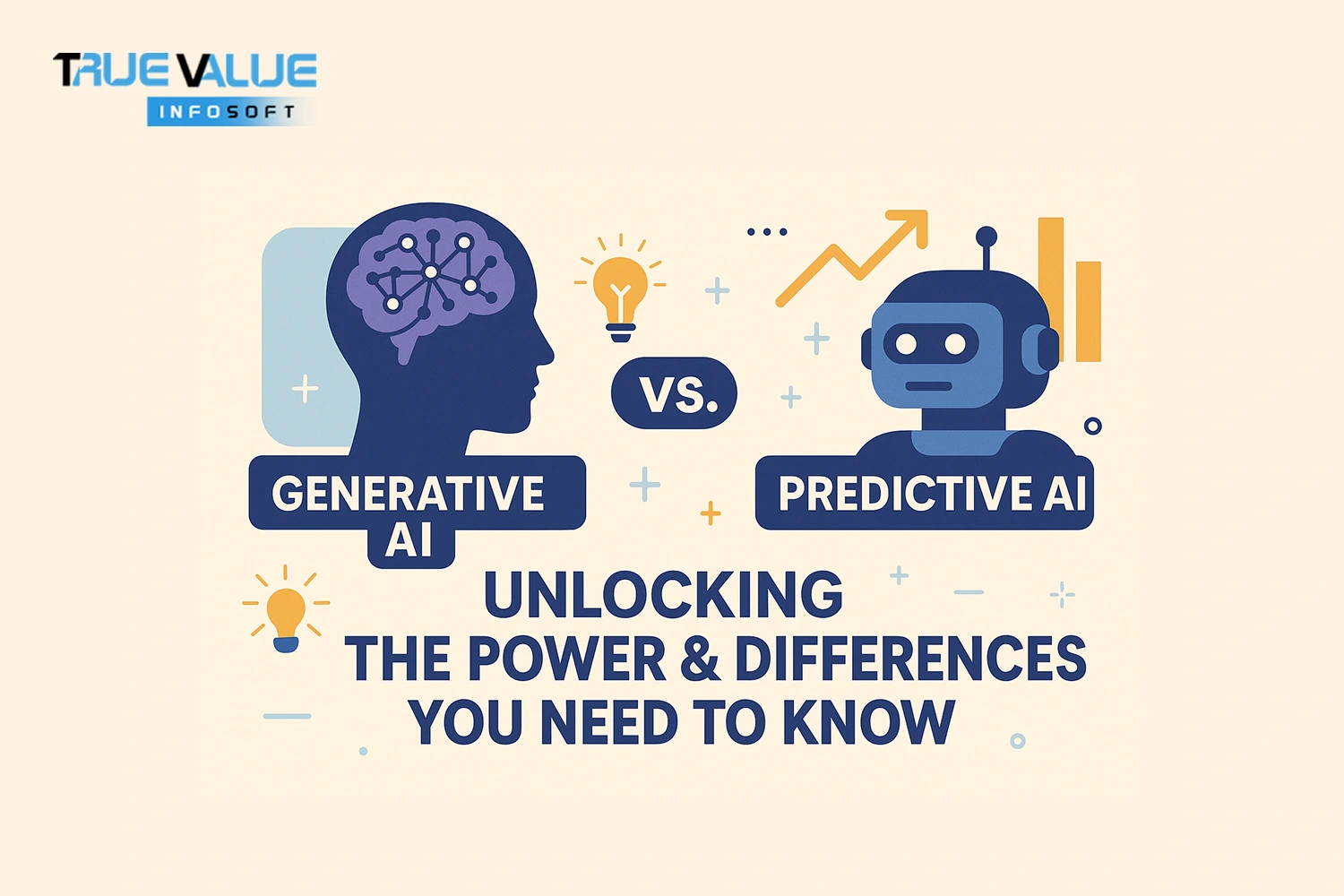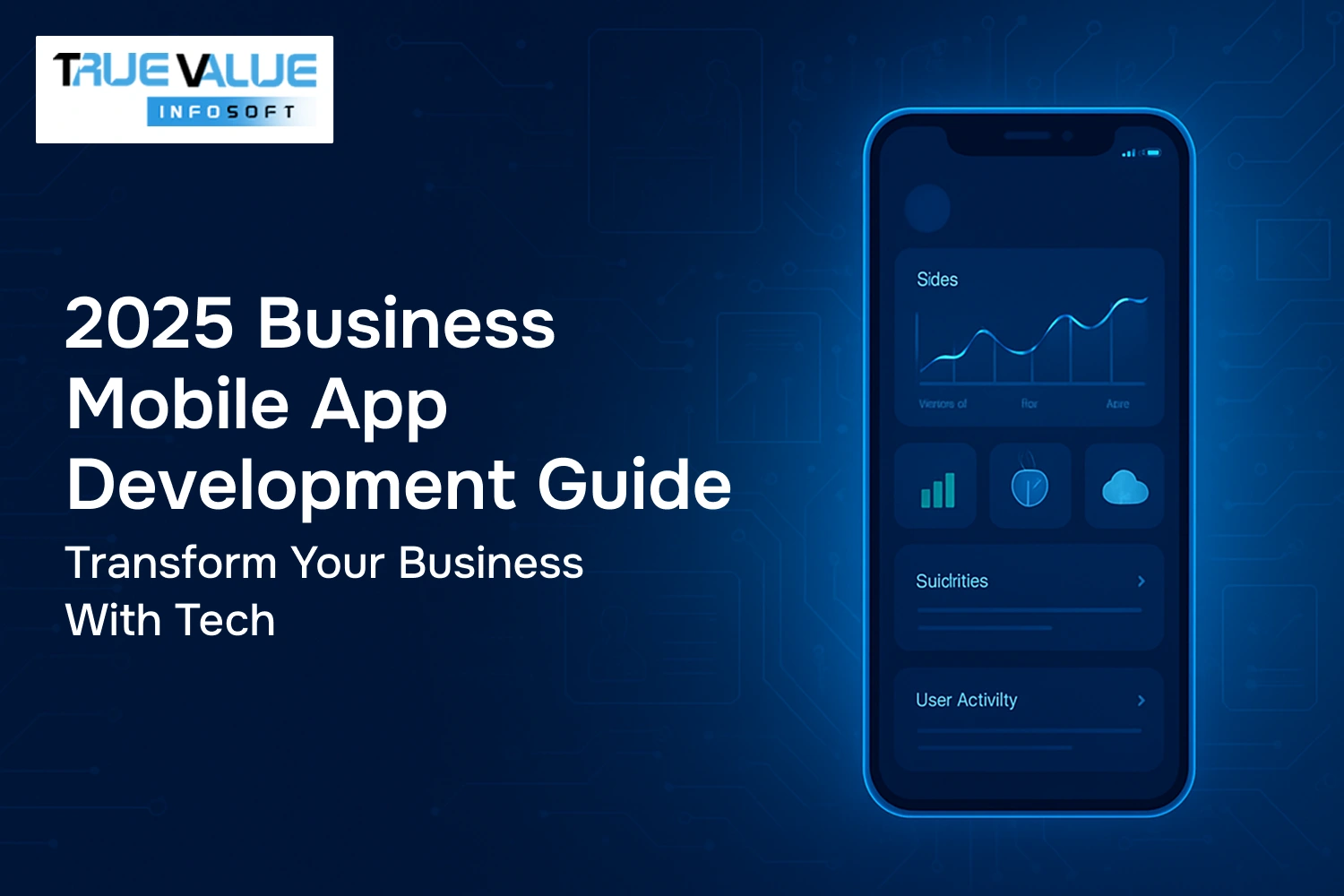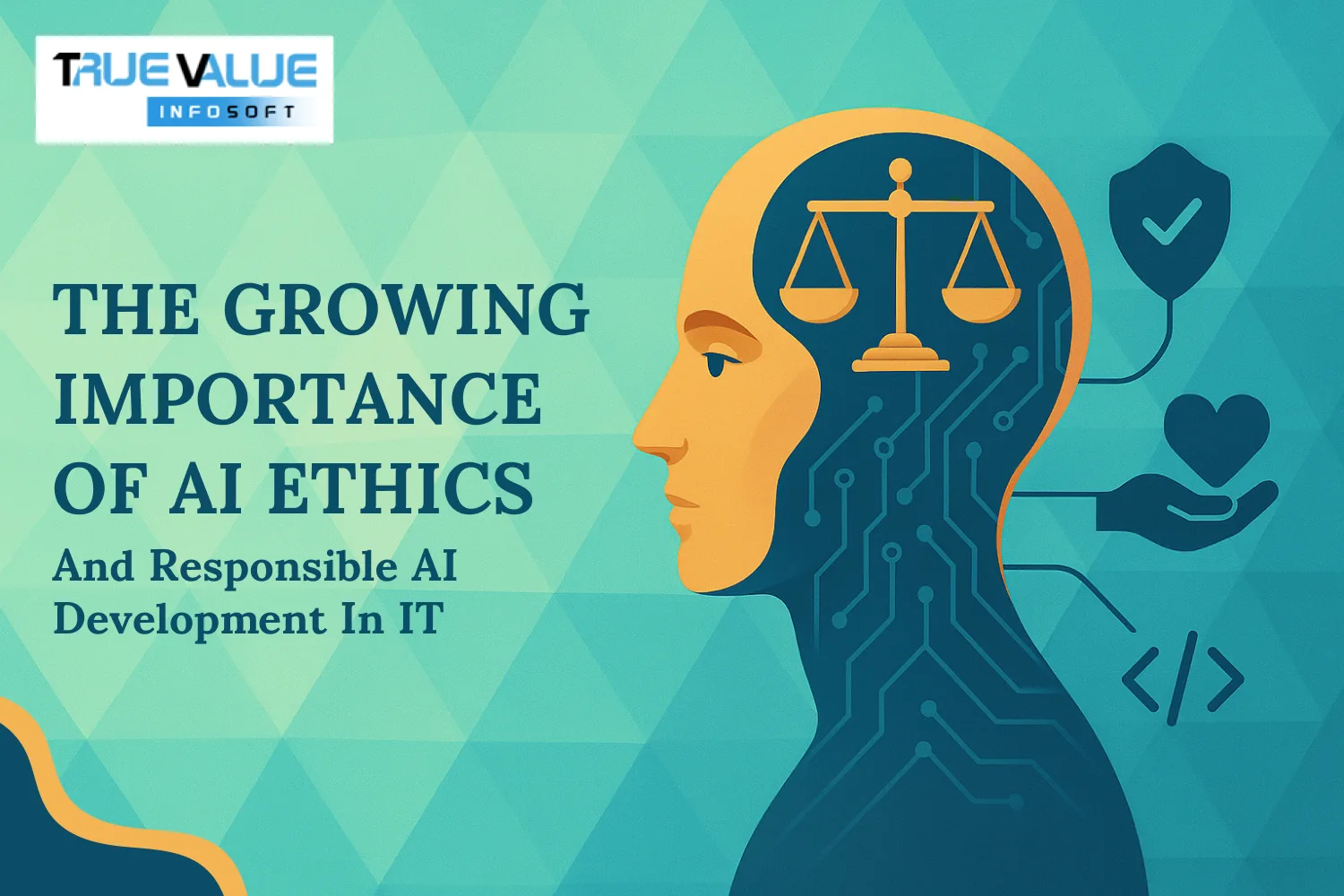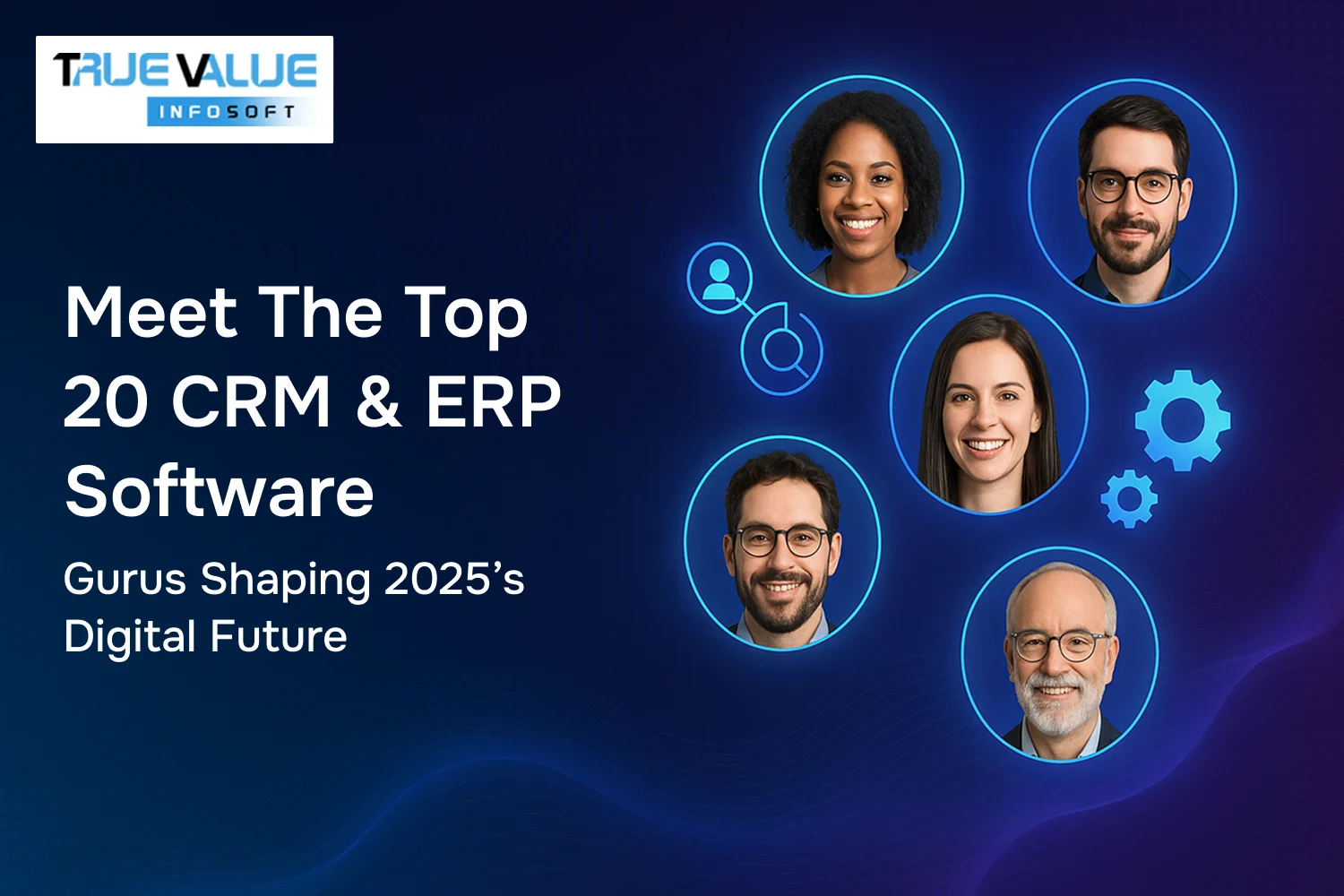Introduction
Looking to skyrocket your tech company’s growth in 2025 but unsure which strategies actually work? In today’s fast-paced digital world, traditional marketing tactics alone won’t cut it. Tech companies need innovative, data-driven approaches to stand out, attract users, and scale rapidly. That’s where growth hacking comes in—a powerful blend of creativity, analytics, and agile experimentation designed to fuel accelerated growth without breaking the bank. But how do you identify which growth hacking strategies are effective amidst an ever-evolving tech landscape?
At True Value Infosoft, we understand the unique challenges tech companies face in driving sustainable growth. As a leading IT company renowned for delivering cutting-edge solutions, we’ve helped numerous tech startups and enterprises harness the power of growth hacking to unlock new opportunities. From leveraging AI-driven personalization and optimizing user onboarding to building viral referral programs, the right strategies can transform your business trajectory.
Understanding Growth Hacking in the Modern Tech Landscape
Growth hacking in today’s modern tech landscape represents a dynamic fusion of marketing, product development, data science, and engineering aimed at driving rapid and sustainable business growth. Unlike traditional marketing, which often relies on broad campaigns and slow feedback loops, growth hacking emphasizes continuous experimentation and data-driven decisions to optimize every aspect of the customer journey. In 2025, this approach is more relevant than ever as the digital ecosystem becomes increasingly complex, competitive, and technology-driven.
Modern growth hackers leverage advanced technologies such as artificial intelligence, machine learning, and automation to gather deep insights into user behavior, segment audiences with precision, and personalize interactions at scale. This enables tech companies to deliver highly targeted marketing campaigns, streamline onboarding processes, and create viral product features that fuel organic growth. The convergence of these disciplines also fosters cross-functional collaboration, breaking down traditional silos between marketing, product, and engineering teams to create cohesive growth strategies.
In this environment, growth hacking is not just about acquiring users but also about retaining them, increasing engagement, and maximizing lifetime value. The ability to rapidly test ideas, learn from data, and iterate accordingly gives tech companies a powerful advantage, enabling them to adapt quickly to shifting market trends and user expectations. As a result, growth hacking has become an essential toolkit for tech companies looking to thrive in the fast-paced digital world of 2025.
Core Principles of Growth Hacking for Tech Companies
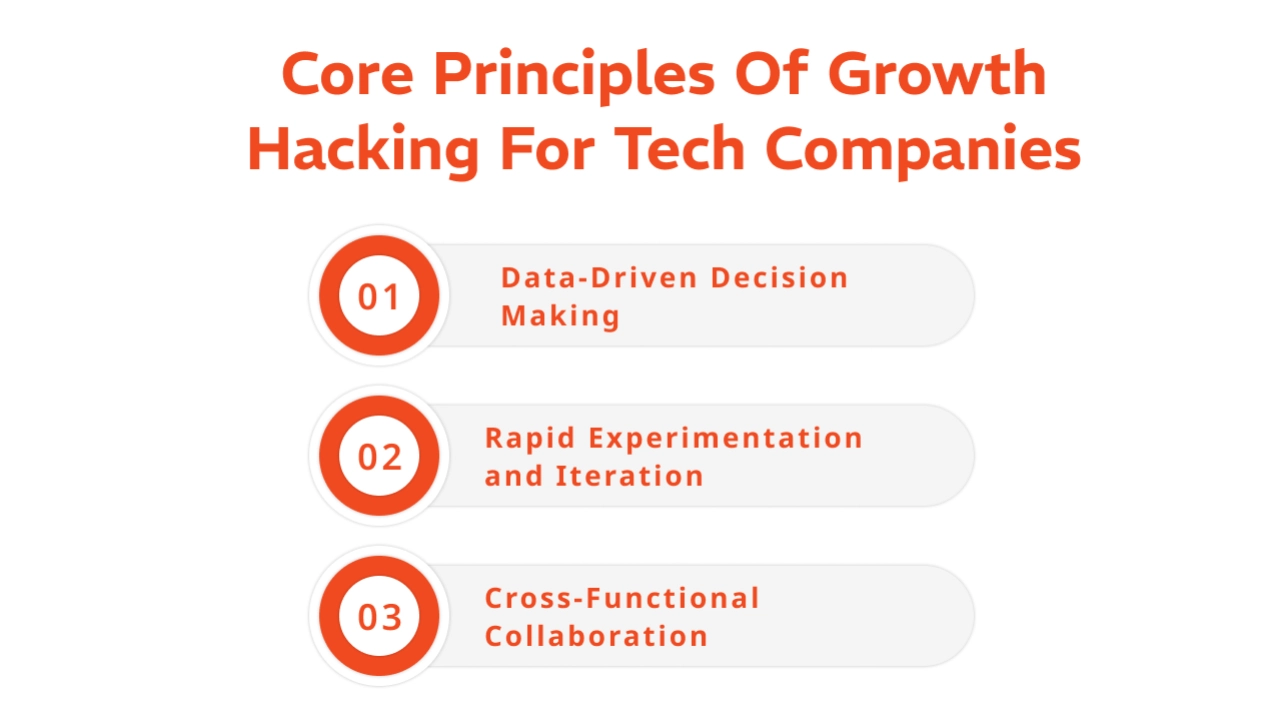
1. Data-Driven Decision Making
At the heart of growth hacking lies data. Collecting and analyzing user data allows companies to understand customer behavior deeply, segment users effectively, and personalize experiences.
- Use AI-powered analytics platforms to track user engagement, churn rates, and conversion funnels in real time.
- Develop predictive models to forecast customer lifetime value (CLV) and identify high-potential segments.
2. Rapid Experimentation and Iteration
Growth hackers constantly test new ideas through A/B tests, landing page optimizations, email campaigns, and product features.
- Adopt agile methodologies to implement fast cycles of hypothesis testing.
- Use feature flags to roll out and roll back features quickly based on user feedback.
3. Cross-Functional Collaboration
Growth hacking requires alignment between product, marketing, engineering, and sales teams.
- Create dedicated growth teams with members from different departments to accelerate decision-making.
- Use collaborative tools like Slack, Jira, and Asana to streamline communication.
User Acquisition Strategies That Work in 2025
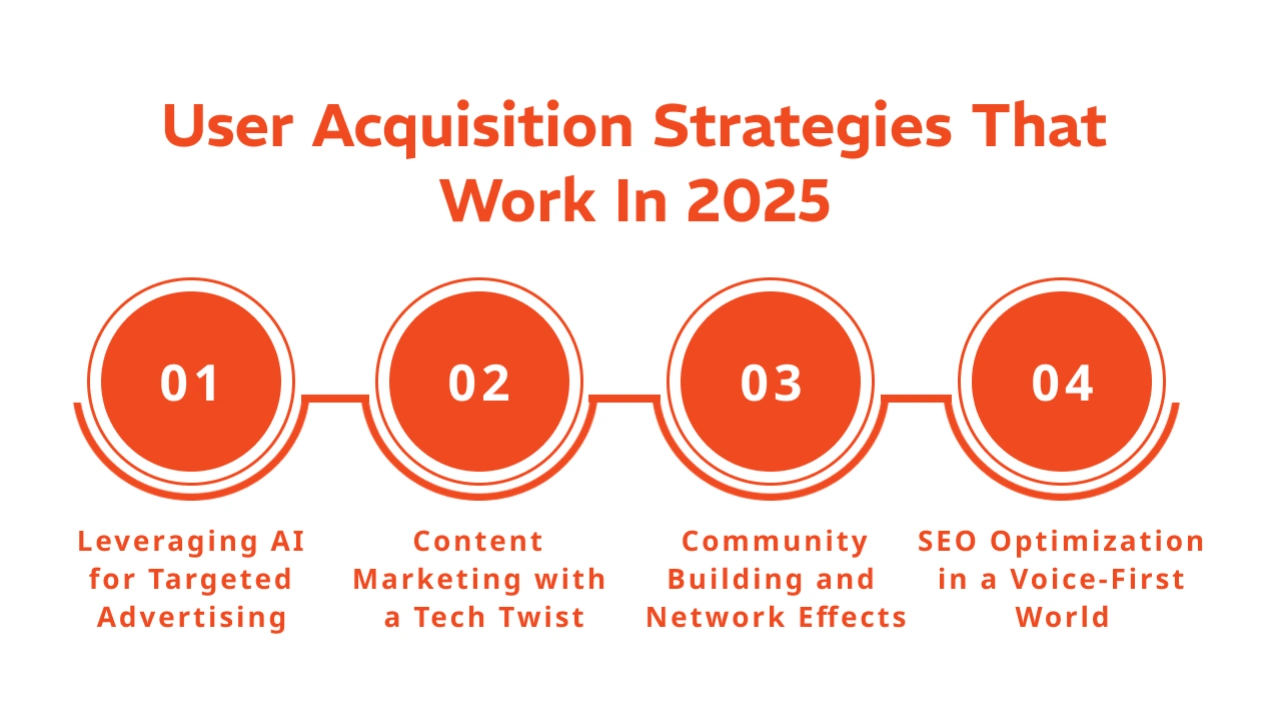
In 2025, user acquisition strategies for tech companies focus on precision, personalization, and platform diversity. AI-powered advertising enables real-time audience targeting, optimizing campaigns across channels like Google, LinkedIn, and TikTok. Voice search optimization and interactive content—such as quizzes and tools—boost organic reach. Influencer partnerships, especially in niche tech spaces, drive credibility and trust. Community building through Discord, Slack, or private forums fosters word-of-mouth growth.
Leveraging AI for Targeted Advertising
Artificial intelligence enhances targeting precision in paid ads across platforms such as Google, Facebook, LinkedIn, and TikTok.
- Use AI tools to optimize bidding strategies, audience segmentation, and ad creative in real-time.
- Deploy programmatic advertising to automatically buy and place ads at optimal moments.
Content Marketing with a Tech Twist
Content remains king but in 2025 it must be highly personalized, interactive, and tech-savvy.
- Create AI-generated personalized blog posts, whitepapers, and tutorials that address specific user pain points.
- Use interactive content such as quizzes, calculators, and chatbots to engage prospects.
Community Building and Network Effects
Creating communities around your product can turn users into advocates and drive organic growth.
- Launch exclusive forums or social media groups for early adopters.
- Use referral incentives powered by blockchain to ensure transparency and trust.
SEO Optimization in a Voice-First World
Voice search is increasingly common with smart assistants like Alexa, Siri, and Google Assistant.
- Optimize content for voice search queries using natural language and conversational keywords.
- Ensure your website loads quickly and uses structured data for better indexing.
Enhancing User Onboarding for Retention and Growth
Enhancing user onboarding is crucial for boosting retention and fueling long-term growth. A smooth, intuitive onboarding experience helps users understand the product's value quickly, reducing early drop-offs. In 2025, tech companies are leveraging AI-driven personalization, interactive tutorials, and gamified experiences to tailor onboarding flows based on user behavior. Streamlined signups, guided tours, and contextual tooltips ensure users feel supported from the start. Effective onboarding not only improves engagement but also increases the likelihood of conversion and long-term loyalty. By investing in smart, user-centric onboarding strategies, tech companies can turn first-time users into loyal advocates and drive sustained growth.
Simplifying the Signup Process
A frictionless signup process reduces drop-offs.
- Use social logins and one-click authentication.
- Minimize the amount of information required upfront.
Personalized Onboarding Flows
Tailored onboarding experiences improve engagement.
- Use AI to customize onboarding content based on user profiles and behaviors.
- Include interactive tutorials and product tours.
Gamification to Drive Engagement
Incorporate game-like elements to motivate users.
- Offer badges, leaderboards, and milestones.
- Use progress bars and rewards for completing onboarding steps.
Product-Led Growth Strategies
Freemium Models with Upsell Opportunities
Offering a free tier allows users to experience value before committing.
- Carefully balance free and premium features to encourage upgrades.
- Use in-app messaging to promote premium benefits contextually.
Building Viral Loops into the Product
Encourage users to invite others through incentives.
- Integrate easy sharing options within the app.
- Offer tangible rewards or exclusive content for referrals.
Leveraging User Feedback for Continuous Improvement
User insights drive product enhancements and build loyalty.
- Implement in-app surveys and feedback widgets.
- Use sentiment analysis on user reviews to prioritize features.
Leveraging AI and Automation in Growth Hacking
Leveraging AI and automation in growth hacking empowers tech companies to accelerate their growth with precision and efficiency. AI-driven tools enable advanced data analysis, predictive insights, and personalized customer interactions, helping businesses tailor marketing efforts to individual user behaviors. Automation streamlines repetitive tasks like email campaigns, lead nurturing, and customer support through chatbots, freeing teams to focus on strategy and creativity. Together, AI and automation optimize user acquisition and retention by delivering timely, relevant experiences at scale, making them indispensable components of modern growth hacking strategies in 2025.
Chatbots and Conversational Marketing
AI chatbots provide instant customer support and qualify leads.
- Deploy chatbots on websites, social media, and messaging apps.
- Integrate chatbots with CRM to personalize conversations.
Automated Email Campaigns
Use automation to nurture leads and onboard users.
- Segment email lists based on user behavior and preferences.
- Trigger emails based on events like signups, inactivity, or milestones.
Predictive Analytics for Growth Forecasting
Predictive models help allocate resources efficiently.
- Analyze past data to identify trends and forecast revenue.
- Use machine learning to detect churn risk and intervene proactively.
Growth Hacking Through Partnerships and Integrations
Strategic Partnerships
Collaborate with complementary tech companies for mutual growth.
- Co-market products through joint webinars, case studies, and bundles.
- Develop API integrations that add value to both platforms.
Marketplace and Ecosystem Growth
Leverage app stores and marketplaces to expand reach.
- Optimize listings with clear value propositions and user reviews.
- Engage with developer communities to create plugins and extensions.
Measuring Growth: KPIs and Analytics for 2025
Measuring growth in 2025 requires a sharp focus on key performance indicators (KPIs) and advanced analytics to drive data-informed decisions. Essential KPIs for tech companies include Customer Acquisition Cost (CAC), Customer Lifetime Value (CLV), Monthly Recurring Revenue (MRR), churn rate, and activation rate. Leveraging real-time dashboards allows teams to monitor these metrics continuously, enabling agile responses to trends. Cohort analysis further helps identify patterns in user behavior over time, revealing opportunities to improve retention and engagement. With AI-powered analytics becoming mainstream, companies can forecast growth more accurately and optimize strategies for sustainable success in today’s dynamic market.
Key Growth Metrics to Track
- Customer Acquisition Cost (CAC)
- Customer Lifetime Value (CLV)
- Monthly Recurring Revenue (MRR)
- Churn Rate
- Activation Rate (percentage of users completing onboarding)
Using Real-Time Dashboards
Implement dashboards that update key metrics continuously for agile decision-making.
Cohort Analysis
Analyze user behavior over time to identify trends and optimize retention.
Case Studies: Growth Hacking Success Stories in Tech
Growth hacking faces several challenges, including data privacy concerns, maintaining user trust, and balancing rapid growth with a quality user experience. Navigating regulations like GDPR and CCPA requires transparency and privacy-by-design approaches to avoid legal pitfalls. Additionally, aggressive growth tactics can sometimes degrade product quality or overwhelm customers, leading to churn. To overcome these hurdles, companies should prioritize ethical data practices, actively seek and act on user feedback, and foster cross-functional collaboration between marketing, product, and engineering teams. A sustainable growth strategy blends innovation with responsibility
Case Study 1: SaaS Company Using AI-Powered Personalization
How a SaaS startup grew 300% in one year by deploying AI-driven personalized email campaigns and product recommendations.
Case Study 2: Marketplace Leveraging Viral Loops
A tech marketplace doubled its user base by integrating a referral program with gamified rewards.
Challenges in Growth Hacking and How to Overcome Them
Data Privacy and Compliance
Balancing aggressive growth with GDPR, CCPA, and other regulations.
- Adopt privacy-by-design principles.
- Be transparent with users about data use.
Avoiding Growth at the Expense of User Experience
Ensuring growth strategies do not degrade product quality or customer satisfaction.
- Regularly gather and act on user feedback.
- Maintain a strong product focus alongside marketing efforts
Future Trends in Growth Hacking for Tech Companies
Future trends in growth hacking for tech companies are set to redefine how businesses scale and engage customers. In 2025, hyper-personalization powered by advanced AI will dominate, enabling companies to deliver ultra-targeted experiences tailored to individual user behaviors and preferences. Decentralized growth models leveraging blockchain technology will introduce new, transparent ways to build trust and incentivize user acquisition through token-based rewards and community governance.
Additionally, immersive technologies like augmented reality (AR) and virtual reality (VR) will create novel marketing opportunities, allowing brands to offer interactive and memorable experiences that deepen customer engagement. Finally, ethical growth hacking emphasizing data privacy and responsible AI use will gain importance, as consumers increasingly demand transparency and respect for their data. Together, these trends will help tech companies achieve sustainable, scalable growth in an ever-evolving digital landscape.
- Hyper-Personalization Using AI: Growth hacking will increasingly rely on micro-segmenting users and delivering hyper-relevant experiences.
- Decentralized Growth Models: Blockchain and decentralized apps (dApps) will open new channels for user acquisition and engagement.
- Augmented Reality (AR) and Virtual Reality (VR) for Marketing: Immersive technologies will create novel customer experiences, enhancing brand interaction and retention.
Why Choose True Value Infosoft as the Best IT Development Company in India
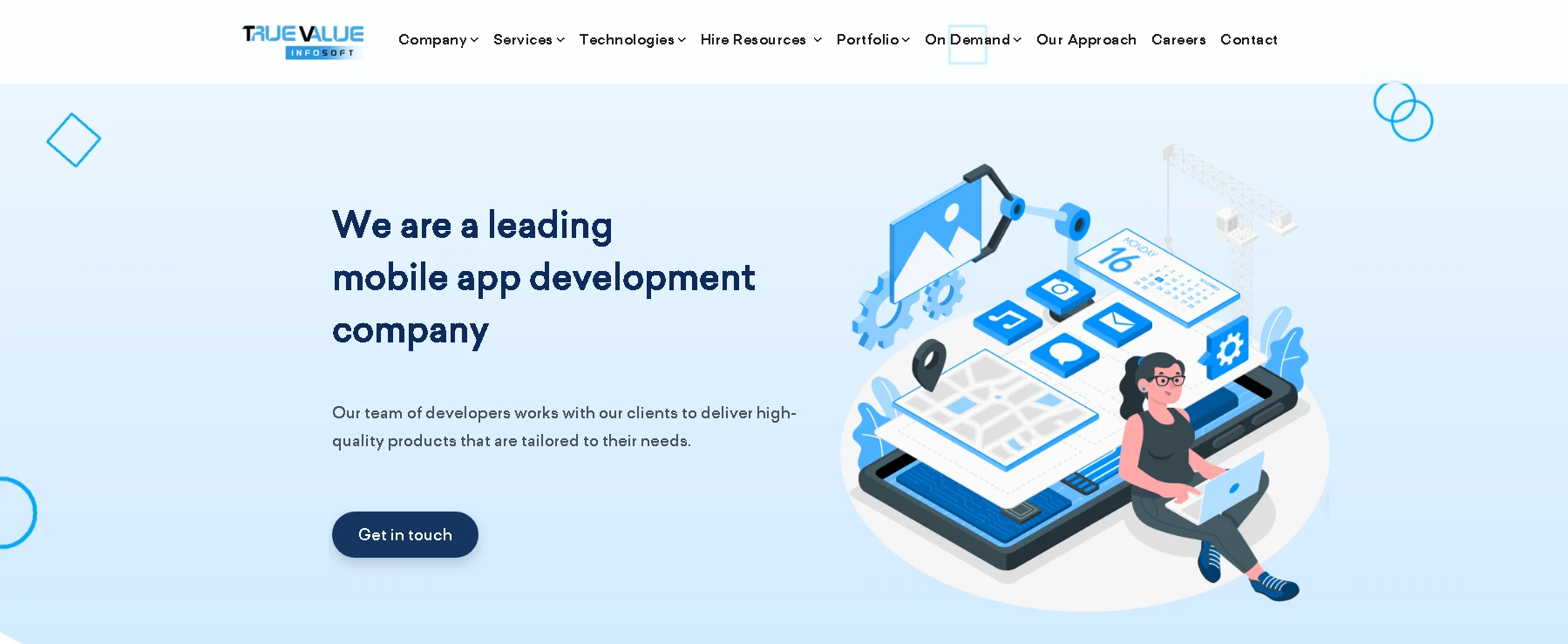
When it comes to best IT development in India, True Value Infosoft has earned its reputation as the industry leader. Here’s why choosing us is a smart move for businesses aiming to stay ahead in the AI revolution:
- Expert AI Talent: We house a team of AI experts, data scientists, and machine learning engineers who deliver intelligent, tailored solutions.
- Custom AI Solutions: From AI-powered chatbots to predictive analytics, we craft solutions based on your unique business goals.
- Cutting-Edge Technology: We leverage the latest in AI and machine learning frameworks like TensorFlow, PyTorch, and OpenAI tools to build scalable apps.
- Industry Experience: With over a decade of experience in tech innovation, we’ve delivered AI solutions across healthcare, fintech, eCommerce, and more.
- Agile Development Process: We follow agile methodology to ensure flexibility, transparency, and on-time delivery.
- Client-Centric Approach: Our commitment to client success drives us to offer post-deployment support, consultation, and continuous improvement.
True Value Infosoft is not just a service provider – we’re your strategic AI partner. Let us transform your vision into a smart, data-driven reality.
Conclusion
As we move deeper into 2025, growth hacking remains a vital strategy for tech companies eager to thrive in an ever-evolving digital landscape. The combination of data-driven insights, agile experimentation, and cutting-edge technologies like AI and automation empowers companies to unlock new avenues for user acquisition, retention, and revenue growth. However, the true power of growth hacking lies not just in the tactics themselves, but in the mindset of continuous learning, cross-functional collaboration, and relentless innovation.
In conclusion, True Value Infosoft stands out as Android app development company in India, delivering innovative, scalable, and intelligent solutions tailored to meet modern business needs. With a proven track record of successful AI integrations across industries, the company combines cutting-edge technology with deep domain expertise. From chatbot development to AI-powered analytics, True Value Infosoft helps businesses unlock the true potential of artificial intelligence.
Ultimately, growth hacking in 2025 is not a one-size-fits-all solution but a dynamic, evolving practice tailored to the unique challenges and opportunities of the tech sector. By integrating these proven strategies and staying agile, tech companies can confidently navigate the future, turning challenges into opportunities and driving meaningful, lasting growth in a highly competitive world.
FAQs
Growth hacking focuses on rapid experimentation across marketing, product, and engineering to identify scalable growth strategies, whereas traditional marketing often involves broader, less iterative campaigns.
Startups can leverage organic growth tactics like content marketing, social media engagement, referral programs, and lean experimentation with analytics tools.
AI is crucial for data analysis, personalization, automation, and predictive modeling, making growth efforts more efficient and effective.
Channels include paid ads optimized by AI, SEO (especially voice search), content marketing, community building, and strategic partnerships.
Success is measured using KPIs like CAC, CLV, churn rate, MRR, activation rate, and cohort analysis to understand user engagement and revenue impact.
